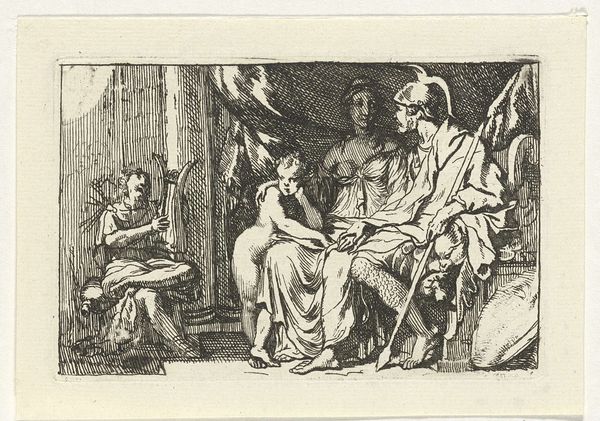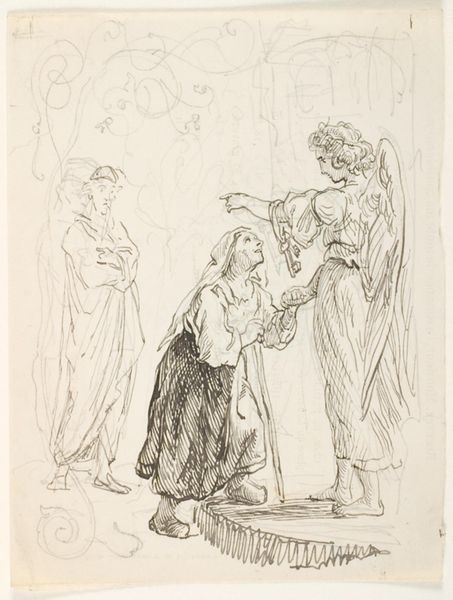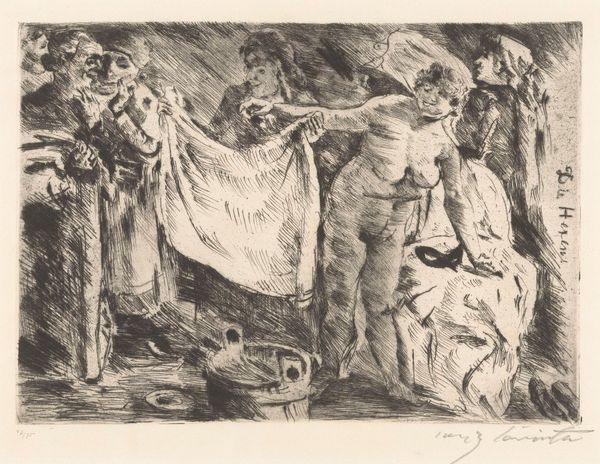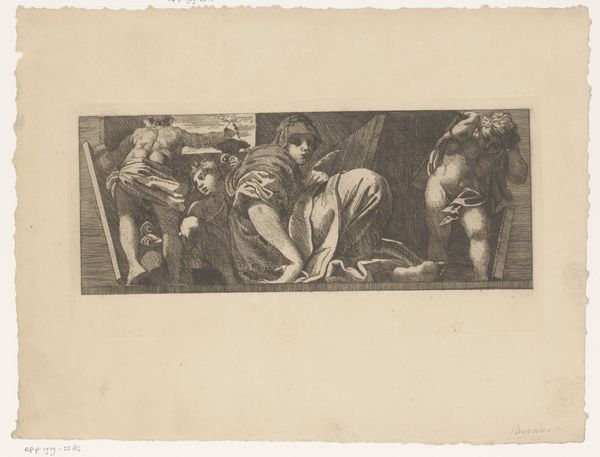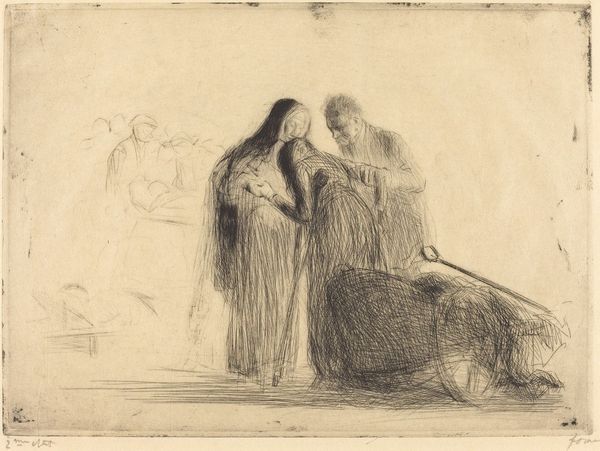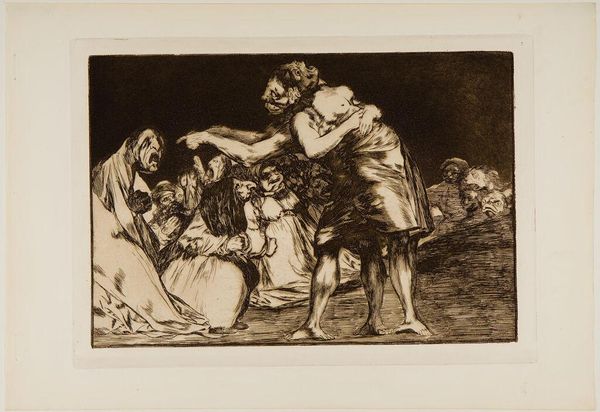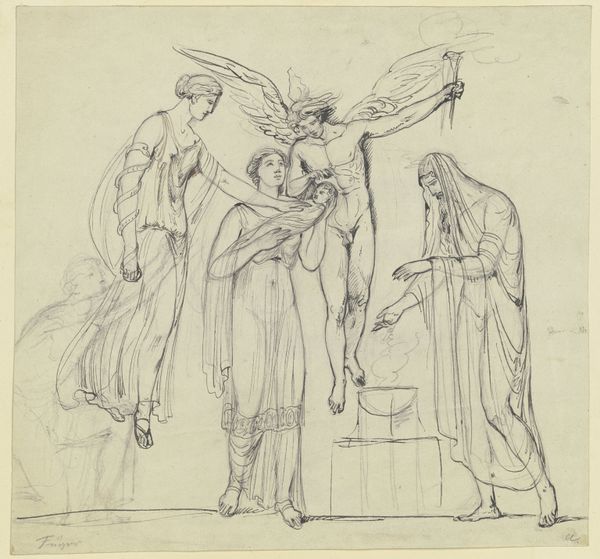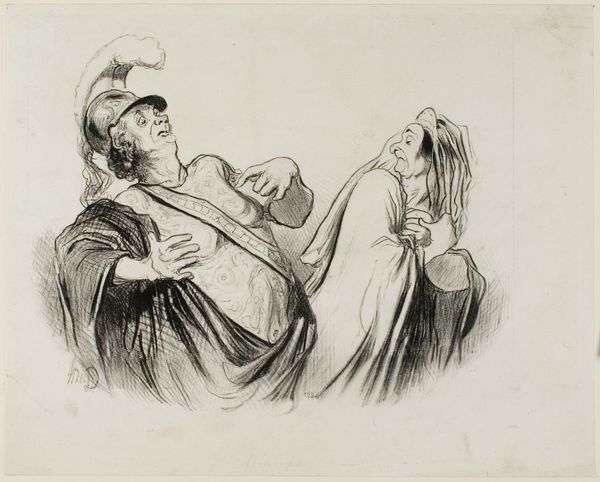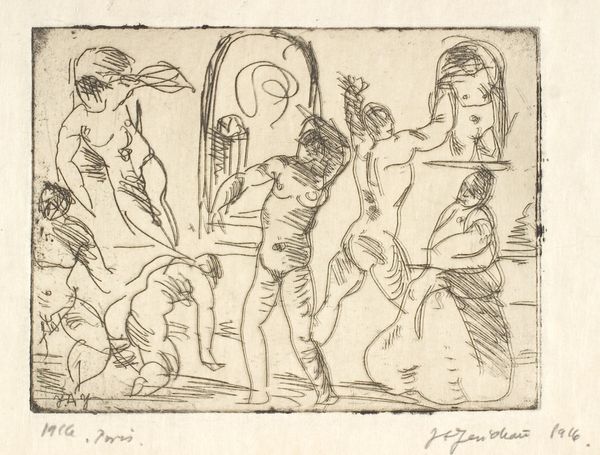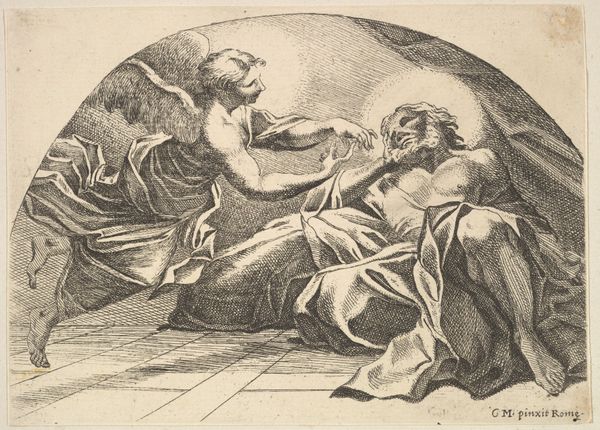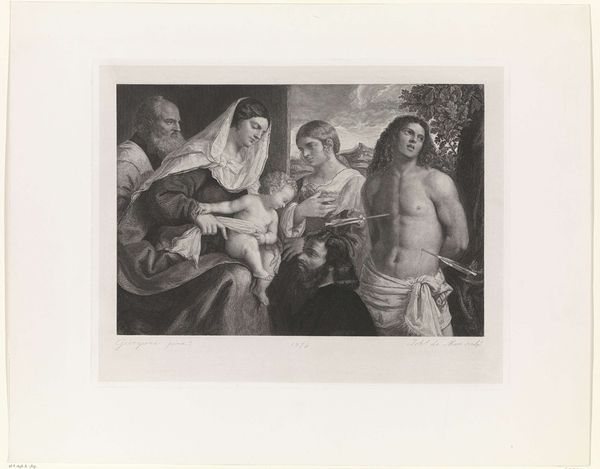
print, etching
#
cubism
#
neoclassicism
# print
#
etching
#
figuration
#
form
#
line
#
history-painting
Dimensions: plate: 17.8 x 23.7 cm (7 x 9 5/16 in.) sheet: 33.7 x 44.8 cm (13 1/4 x 17 5/8 in.)
Copyright: National Gallery of Art: CC0 1.0
Curator: This etching by Pablo Picasso, titled "The Spring," also known as "La source," was created in 1921, during a period when he was experimenting with neoclassical themes. What are your initial thoughts on viewing this work? Editor: My first impression is ethereal melancholy, wouldn't you say? The linework almost dissolves the figures, lending them an intangible quality. Like witnessing a half-remembered dream. It is the sort of intimacy one finds while listening to soft lullabies hummed at twilight, familiar, haunting, beautiful, and sad all at once. Curator: Interesting. Considering Picasso's broader artistic output, "The Spring" feels unique, a deviation from the harsh angularity typically associated with Cubism. It’s crucial to consider how the medium of etching itself—the acid biting into the metal, the controlled lines—affects the final image, offering both precision and a sense of classical restraint. The social context is equally important here. Remember post-World War I Paris was actively looking back to classical ideals, as a form of order to be applied to chaos. Editor: Exactly. The technique becomes a translation of history and nostalgia— the clean lines almost like sketches found in an ancient philosopher's notebook. And yet there's something undeniably modern in the faces; it has the faintest aura of futurist geometry hidden within classic form, like ancient souls reborn for the industrial age, forced to recall paradise amidst coal-dusted smog. Curator: Yes! By understanding etching's technical limitations and creative possibilities, combined with our knowledge of post-war yearning for stability, we perceive Picasso working within defined parameters but reaching for some universal timelessness. Note his use of drapery. These elements, while seemingly simple, directly echo classical sculptures which by this time, industrial processes had allowed to spread even wider into global consciousness and taste. Editor: The composition is also incredibly effective, isn’t it? Those women...are they spring, youth, and time? Their vulnerability creates an unexpected depth that transcends merely their physicality, echoing throughout civilization to create something...human. Curator: It certainly opens pathways for thoughtful contemplation, as you imply. Thanks to understanding Picasso’s choices in material production and the cultural appetite for classical themes, this print gains resonance. Editor: Absolutely. “The Spring” reminds us of art’s eternal capacity to evoke empathy and connect the threads of our collective story. A masterpiece from industry, into immortality.
Comments
No comments
Be the first to comment and join the conversation on the ultimate creative platform.
